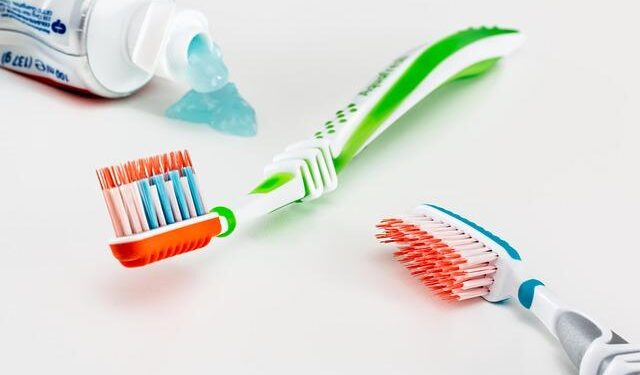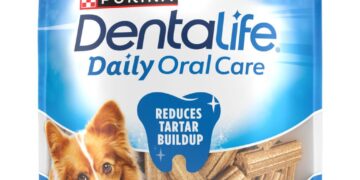Table of Contents
As a young, idealistic veterinary technician, I walked out of my certification exams armed with a formidable arsenal of knowledge.
I could calculate drug dosages, monitor anesthesia, and explain the intricacies of feline dental health with textbook precision.
I was confident, prepared, and ready to help pet owners provide the best possible care.
Then, I went home to Leo.
Leo was my beloved tabby, a creature of elegant indifference and surprising affection.
And every night, he was my humbling failure.
The battle began the moment he saw the little tube of chicken-flavored toothpaste.
What followed was a nightly ritual of frustration: a wrestling match on the bathroom floor, Leo’s body tense, his ears pinned back in distress, and my own guilt mounting with every squirm.
I was a trained professional, yet I couldn’t perform the one task I so confidently prescribed to my clients.
The disconnect was jarring.
If I couldn’t do this, how could I possibly expect a cat owner with no medical training to succeed?
This question became a quiet obsession.
It forced me to look beyond the standard advice—the pamphlets and the well-meaning instructions—and question the very foundation of our approach.
The answer, when it finally came, wasn’t found in a veterinary journal or an animal behavior textbook.
It was in the seemingly unrelated world of human psychology, and it changed everything.
This is the story of that discovery, a solution that isn’t about more force or better cat “training,” but about a fundamental shift in perspective that can transform this dreaded chore into a simple, sustainable ritual of care.
Part 1: The Silent Epidemic in Our Homes
The Dental Health Disconnect: A Problem of Perception
In veterinary clinics across the country, a familiar story unfolds.
We see cats with painful dental conditions that could have been prevented with consistent home care.1
The paradox is that most cat owners are not ignorant of the problem.
A Swedish study found that two-thirds of cat owners knew about feline dental disease and could list common signs like bad breath, gum inflammation (gingivitis), and changes in eating habits.3
Yet, the same research revealed that preventative measures are shockingly inadequate.
Less than half of owners performed any preventative care, and a mere 7% reported brushing their cat’s teeth daily or even every other day.4
This isn’t a failure of knowledge; it’s a failure of action.
And the root of this failure lies in a dangerous biological mismatch.
Cats are masters of hiding pain, a survival instinct honed over millennia to avoid showing weakness to predators.1
Signs of dental discomfort are often incredibly subtle—a slight hesitation before eating, a preference for one side of the mouth, increased lethargy, or a cat who just seems “not their normal self”.5
Owners, in turn, frequently misinterpret these subtle shifts as normal signs of aging.5
This creates a perilous feedback loop.
The cat’s instinct to hide pain directly undermines the owner’s psychological motivation to perform a difficult task like tooth brushing.
The perceived cost—the stress of the nightly battle with the toothbrush—far outweighs the perceived benefit of solving a problem that doesn’t seem urgent or severe.
The result is an invisible epidemic of oral pain.
The problem silently worsens until it becomes a crisis, culminating in a necessary but expensive veterinary dental procedure under general anesthesia, often involving painful extractions.1
Why It Matters: The Mouth is the Gateway to the Body
Dismissing feline dental care as a mere cosmetic issue—a fix for “bad breath”—is a profound misunderstanding of feline physiology.
The process begins with plaque, a soft, sticky biofilm of bacteria that constantly forms on the teeth.8
If not removed by brushing, this plaque mineralizes and hardens into tartar (or calculus), a rough substance that provides even more surface area for bacteria to thrive.7
This buildup of plaque and tartar at and below the gumline triggers inflammation, leading to gingivitis—the red, swollen gums familiar to many cat owners.10
Left unchecked, gingivitis progresses to periodontal disease, a destructive condition that damages the supporting structures of the teeth, including the ligaments and the jawbone itself.7
This is not just a local problem.
The chronic inflammation and bacteria in the mouth can have systemic consequences, with studies linking advanced periodontal disease to changes and infections in the kidneys, liver, and even the heart muscle.2
During anesthetized dental examinations, veterinarians uncover a world of hidden pain that daily brushing could have prevented.
One of the most common and painful conditions is feline odontoclastic resorptive lesions (FORLs).
These are cavity-like lesions that form at the neck of the tooth, where the gum meets the enamel, and they can cause the tooth’s roots to be resorbed by the body.1
They are intensely painful, yet a cat may show no sign other than a subtle change in behavior.
This silent suffering is the true cost of the knowledge-action gap in feline dental care.
Part 2: The Epiphany: It’s Not About Training the Cat, It’s About Hacking the Human
The Flaw in the “Standard Advice”
My nightly failures with Leo weren’t for lack of trying the “correct” methods.
I followed the standard veterinary playbook to the letter: start slow, get him used to having his mouth touched, use a tasty toothpaste, and offer lots of praise.12
I tried finger brushes, gauze pads, and every soft-bristled brush I could find.
But every attempt ended the same way—with a stressed cat and a defeated owner.
The flaw in this well-intentioned advice is that it places the entire burden on the owner’s willpower and motivation, treating the problem as one of animal training.
It presents a series of steps but offers no robust framework for building a resilient human habit, especially when faced with an uncooperative subject.
Motivation is a finite and notoriously unreliable resource.
On days when you’re tired, busy, or stressed, the prospect of a feline wrestling match is the first thing to be dropped from the to-do list.
The standard advice sets owners up for failure because it asks them to push a boulder uphill with sheer force of will, day after day.
The Turning Point: A Lesson from Behavioral Psychology
My breakthrough came from an unexpected place.
While researching human behavior change for a completely unrelated project, I stumbled upon the work of Charles Duhigg, author of The Power of Habit, and BJ Fogg, a behavioral scientist at Stanford University.
Their models for how humans form and sustain habits struck me like a bolt of lightning.
The problem wasn’t Leo; the problem was my approach.
I had been trying to train my cat, when I should have been focused on hacking my own brain.
This led to the creation of what I now call The “Happy Mouth” Habit System. This system reframes feline dental care not as an animal training task, but as a human habit-formation project, governed by two powerful psychological models.
Model 1: The Habit Loop (Charles Duhigg)
Duhigg explains that every habit operates on a simple neurological loop consisting of three parts: a Cue, a Routine, and a Reward.15 The Cue is the trigger that tells your brain to go into automatic mode.
The Routine is the behavior itself.
The Reward is the positive feedback that tells your brain this loop is worth remembering for the future.
The standard advice for cat tooth brushing focuses almost exclusively on the Routine (the brushing itself) while completely ignoring the Cue and the Reward, making it nearly impossible for the behavior to become an automatic, ingrained habit.
Model 2: The Tiny Habits Model (BJ Fogg)
This was the critical piece of the puzzle.
Fogg’s Behavior Model states that for a behavior to occur, three things must converge: Motivation, Ability, and a Prompt (a cue).
The formula is B=MAP.18 This model reveals exactly why the standard advice fails.
Brushing a resistant cat’s teeth is a low-“Ability” task—it is physically awkward and emotionally difficult.
To get this behavior to happen, the model shows it requires an immense amount of “Motivation.” But as we’ve established, motivation fluctuates wildly.18 On a low-motivation day, the behavior simply won’t happen.
The revolutionary insight from Fogg’s work is to stop trying to boost unreliable motivation and instead radically increase Ability by making the behavior ridiculously easy, or “tiny”.18
A “tiny” version of tooth brushing is not a full 30-second scrub.
It is letting the cat lick toothpaste off your finger.
It is touching one tooth for one second.
This action is so small and easy that it requires almost zero motivation to perform.
The secret to consistent feline dental care is to redefine success.
Success is not a perfectly brushed mouth on day one.
Success is performing a ridiculously small, stress-free action every single day.
This tiny action, when paired with a consistent prompt and an immediate celebration (the reward), builds the neural pathway of the habit itself, independent of your daily motivation levels.
The habit is the goal, not the initial outcome.
Once the habit is wired in your brain, the behavior can be gradually and successfully expanded.
Part 3: Your 30-Second Path to Success: A Step-by-Step Guide to the “Happy Mouth” Habit System
This system is designed to be simple, stress-free, and sustainable.
It integrates the psychological power of the Tiny Habits model with the gentle, respectful principles of low-stress veterinary handling.
Step 1 – The Setup: Anchor, Tools, and Mindset
- Find Your Anchor Moment (The Prompt): Before you do anything else, you must identify your prompt. A prompt, or “anchor,” is a reliable, existing habit in your daily routine that will serve as the trigger for your new tiny habit. Do not leave this to chance. Choose something you already do without fail. Examples include: “After I pour my morning coffee,” “Right after I take off my shoes when I get home,” or “While the microwave is heating my lunch”.18 This anchors the new behavior to a solid, pre-existing routine.
- Gather Your Tools: To maximize “Ability,” have your tools ready and waiting at your anchor location. This means a tube of palatable cat toothpaste and your chosen brush (a soft-bristled cat toothbrush or a silicone finger brush) are sitting right next to your coffee maker or on the end table where you drop your keys.
- Adopt the Right Mindset: This is the most important part. For the first few weeks, your goal is not to clean your cat’s teeth. Your goal is to perform the tiny habit and feel successful. You must remain calm and positive. Cats are incredibly sensitive to their owner’s emotional state; if you are stressed, they will be stressed.22
Step 2 – The Tiny Behavior: The “One-Touch” Technique
This is the “Routine” part of your new habit loop.
Start small—impossibly small.
- Week 1: The Lick. Your entire goal for the first week is this: Immediately after your anchor moment, call your cat over calmly. Put a tiny dab of tasty toothpaste on your index finger. Let your cat sniff and lick it off. That’s it. You are done. This builds a powerful positive association between you, the toothpaste, and a pleasant experience.12
- Week 2: The Touch. Continue the routine from Week 1. After your cat licks the toothpaste, use the same finger to gently touch the outside of one of their large canine teeth for a single second. Do not scrub. Do not restrain. Just a simple, brief touch. This introduces the idea of contact in a non-threatening way, adhering to the “less is more” principle of low-stress handling.25
Step 3 – The “Shine” Celebration: Wiring the Habit
This is the “Reward” that cements the habit in your brain.
It is non-negotiable.
Immediately after you complete your tiny behavior (the lick or the touch), you must perform an instant celebration to create a positive emotion.18
This shot of positive feeling is what tells your brain to wire this habit for the future.
Your celebration can be anything that feels genuine to you: a quiet “Yes!” a little fist pump, or saying “Good job!” to yourself.
The celebration is for you, to reinforce your own behavior.
Your cat’s reward is the tasty paste and the brief, positive interaction.
Step 4 – The Art of Gradual Expansion
Once the tiny habit of the “lick and touch” feels completely automatic—something you do without thinking—you can begin to slowly “grow” the habit.28
This should only be attempted after the initial habit is firmly established, typically after two to three weeks of perfect consistency.
The expansion must also be gradual and guided by your cat’s response.
Always read their body language—flattened ears, a twitching tail, or a tense body are signs to stop immediately and end on a positive note.22
- Increase Duration: Go from touching one tooth to two. Increase the time from one second to three seconds.
- Introduce the Brush: Start by putting the toothpaste on the brush and simply letting your cat lick it off for a few days. Then, use the brush to make the same one-second touch you previously did with your finger.
- Expand the Area: Gradually move from the front canines to the premolars along the side of the mouth. The outside surfaces are the most important.9
The key is to always operate below your cat’s stress threshold.
The mantra is “always end on a positive note”.29
If your cat resists, you have pushed too far, too fast.
Simply revert to the last successful “tiny” version of the behavior for a few days before trying to expand again.
Part 4: A Vet Tech’s Guide to Choosing the Right Tool for the Job
With a sustainable habit-building system in place, selecting the right toothpaste becomes a crucial part of maximizing your success.
The market is flooded with products, but a few key criteria can help you cut through the noise and choose a tool that is both safe and effective.
The VOHC Seal: Your Non-Negotiable Standard of Proof
The single most important factor to look for on any feline dental product is the Seal of Acceptance from the Veterinary Oral Health Council (VOHC).30
The VOHC is an independent organization of board-certified veterinary dentists and dental scientists that evaluates the scientific evidence behind a product’s claims.
To earn the VOHC seal, a manufacturer must submit data from at least two separate, rigorous clinical trials demonstrating that their product reduces plaque and/or tartar by a statistically significant amount (a minimum of 20%).32
The VOHC does not conduct its own trials; it serves as an expert review board, doing the scientific due diligence on behalf of consumers and veterinary professionals.31
In a marketplace filled with marketing jargon, the VOHC seal acts as a vital cognitive shortcut.
It allows you to immediately filter out products with unproven claims and focus only on those with scientifically validated efficacy.
It transforms the complex task of researching product effectiveness into a simple pattern-matching exercise: just look for the seal.
The Science in the Tube: Enzymatic vs. Calprox
Feline toothpastes primarily use one of two advanced active ingredient systems to combat plaque biochemically, complementing the mechanical action of brushing.
- Enzymatic Toothpastes: These are the most common type of veterinary toothpaste. They utilize a dual-enzyme system, most often containing glucose oxidase and lactoperoxidase.33 This system works by using glucose (sugars) and oxygen naturally present in the cat’s mouth to produce a small, steady amount of hydrogen peroxide. The lactoperoxidase enzyme then uses this hydrogen peroxide to convert thiocyanate ions (also naturally present in saliva) into hypothiocyanite, a powerful antibacterial compound that inhibits the growth of plaque-forming bacteria and helps break down existing biofilm.34
- Calprox-Based Toothpastes: This technology is unique to the Petsmile brand. Calprox is a proprietary, encapsulated form of calcium peroxide and minerals.37 Instead of creating an antibacterial compound, Calprox works by gently and safely dissolving the protein pellicle—the thin, sticky biofilm that forms on the tooth surface. It is this pellicle to which plaque, stains, and bacteria adhere. By dissolving it, Calprox effectively lifts the contaminants away, preventing buildup and whitening the teeth.37
The Ingredient Blacklist: What to Avoid
Never use human toothpaste on your cat. These products are designed to be spit out and contain ingredients that can be harmful when swallowed by a P.T.9
Key ingredients to avoid include:
- Fluoride: Can cause significant gastrointestinal upset and can be toxic in larger quantities.40
- Xylitol: This artificial sweetener is extremely toxic to dogs, causing a life-threatening drop in blood sugar and liver failure. While cats do not appear to have the same severe reaction, it is an unnecessary risk and should be strictly avoided in any multi-pet household.30
- Foaming Agents: Ingredients like sodium lauryl sulfate (SLS) can cause stomach irritation.41
- Baking Soda: Its high alkaline content can disrupt the natural acid balance in your cat’s stomach.9
Top Recommendations for Feline Toothpaste
Based on efficacy, safety, and palatability, these are the top toothpastes to use within your “Happy Mouth” Habit System.
- Top Pick (VOHC-Accepted): Petsmile Professional Pet Toothpaste
As of this writing, Petsmile is the only toothpaste that has earned the VOHC Seal of Acceptance for plaque inhibition in cats.37 This makes it the top recommendation based on proven efficacy. Its unique Calprox formula is non-abrasive and works even with minimal brushing action, making it ideal for the gradual expansion phase of the habit system. It comes in several cat-appealing flavors like London Broil, Rotisserie Chicken, and “Say Cheese”.38 - Top Enzymatic Options (Veterinarian-Recommended)
While not VOHC-accepted, the following enzymatic toothpastes have a long history of being recommended by veterinarians and are trusted for their quality and effectiveness.
- Virbac C.E.T. Enzymatic Toothpaste: Virbac is a cornerstone brand in veterinary dental care.44 Its dual-enzyme formula is a proven workhorse against plaque. Its greatest advantage is the wide variety of flavors available—Poultry, Malt, Beef, Seafood, and even a Vanilla-Mint option—which is invaluable for finding a taste that even the pickiest cat will accept as a treat.47
- Vetoquinol Enzadent Enzymatic Toothpaste: This formula features a powerful triple-enzyme system, adding lactoferrin and lysozyme to the standard glucose oxidase and lactoperoxidase.49 These additional enzymes provide enhanced antibacterial action, making it an excellent choice for cats who may be more prone to plaque accumulation.47 It is widely available in a palatable poultry flavor.
Table 1: Comparative Analysis of Top Feline Toothpastes
| Product Name | VOHC Seal (Cats) | Key Active Ingredient(s) | Mechanism of Action | Flavor Options | Best For |
| Petsmile Professional | Yes – Plaque 37 | Calprox | Dissolves protein pellicle to lift plaque 38 | London Broil, Rotisserie Chicken, Say Cheese 38 | The highest standard of proven, VOHC-certified efficacy. |
| Virbac C.E.T. Enzymatic | No | Glucose Oxidase, Lactoperoxidase | Produces a natural antibacterial compound 34 | Poultry, Malt, Beef, Seafood, Vanilla-Mint 48 | Picky eaters who require a wide variety of flavor choices. |
| Vetoquinol Enzadent | No | Triple-Enzyme System | Enhanced biochemical antibacterial action 50 | Poultry 49 | Owners seeking maximum enzymatic action against bacteria. |
Conclusion: Transforming a Chore into a Connection
The frustrating, guilt-ridden battle with the feline toothbrush is a shared experience for countless cat owners—and veterinary professionals.
For too long, we have approached this problem from the wrong direction, focusing on the impossible task of forcing compliance from our cats.
The solution lies not in more effective restraint, but in a more compassionate and intelligent understanding of our own psychology.
Success in feline dental care comes from abandoning the struggle of “training the cat” and embracing the science of “building a tiny human habit.” By anchoring a ridiculously small action to an existing routine and celebrating its completion, we can effortlessly wire a new behavior into our brains.
The focus shifts from the daunting outcome of a perfectly clean mouth to the achievable process of a consistent, positive micro-interaction.
This 30-second daily ritual is more than a clinical task; it is an opportunity.
It is a predictable, gentle moment of care that reinforces the bond between you and your cat.
It transforms a source of conflict into a moment of connection.
I invite you to start your own tiny habit today—not for the sake of immediate perfection, but for the sake of starting a sustainable journey, one that will protect your cat’s long-term health and deepen the trust you share for years to come.
Works cited
- What Every Cat Owner Should Know About Dental Care For Cats – Valley West Veterinary Hospital, accessed August 15, 2025, https://www.valleywestvets.com/services/cats/cat-dental-care
- What Every Cat Owner Should Know About Dental Care For Cats, accessed August 15, 2025, https://www.ancarevet.com/services/cats/cat-dental-care
- (PDF) Dental Problems and Prophylactic Care in Cats—Knowledge and Perceptions among Swedish Cat Owners and Communication by Veterinary Care Staff – ResearchGate, accessed August 15, 2025, https://www.researchgate.net/publication/354276887_Dental_Problems_and_Prophylactic_Care_in_Cats-Knowledge_and_Perceptions_among_Swedish_Cat_Owners_and_Communication_by_Veterinary_Care_Staff
- Dental Problems and Prophylactic Care in Cats—Knowledge and Perceptions among Swedish Cat Owners and Communication by Veterinary Care Staff – MDPI, accessed August 15, 2025, https://www.mdpi.com/2076-2615/11/9/2571
- Oral Examination in the Cat: A systematic approach – PMC, accessed August 15, 2025, https://pmc.ncbi.nlm.nih.gov/articles/PMC11044606/
- Should I Brush My Cat’s Teeth? How Often? – Holistapet, accessed August 15, 2025, https://www.holistapet.com/blogs/cat-care/should-i-brush-my-cats-teeth
- Pet dental care | American Veterinary Medical Association, accessed August 15, 2025, https://www.avma.org/resources-tools/pet-owners/petcare/pet-dental-care
- Feline Dental Care – Animal Behavior College, accessed August 15, 2025, https://www.animalbehaviorcollege.com/blog/lifestyle/health/feline-dental-care-2/
- Brushing Your Cat’s Teeth – VCA Animal Hospitals, accessed August 15, 2025, https://vcahospitals.com/know-your-pet/brushing-teeth-in-cats
- Feline Dental Care – Westchester Veterinary Center and Cat Clinic, accessed August 15, 2025, https://www.westchestervet.com/cat-clinic/feline-dental-care/
- How Dental Care Keeps Your Pet Healthy and Happy, accessed August 15, 2025, https://vetmed.vt.edu/news/2023/pet-dental-care.html
- Should I clean my cat’s teeth? | Blog – Cats Protection, accessed August 15, 2025, https://www.cats.org.uk/cats-blog/should-i-clean-my-cats-teeth
- How to brush your cat’s teeth – International Cat Care, accessed August 15, 2025, https://icatcare.org/articles/how-to-brush-your-cats-teeth
- Cat Dental Health – What Every Owner Should Know About Cats Dental Hygiene, accessed August 15, 2025, https://www.crittercreekvet.com/site/blog/2023/10/15/cat-dental-health—what-every-owner-should-know-about-cats-dental-hygiene
- Habit Formation and Deconstruciton: A Study in Behavioral Psychology – Digital Commons@Kennesaw State, accessed August 15, 2025, https://digitalcommons.kennesaw.edu/cgi/viewcontent.cgi?article=1012&context=emergingwriters
- The Habit Loop | – Game Design Thinking – Stanford University, accessed August 15, 2025, https://gdt.stanford.edu/the-habit-loop/
- Habit Loop: What It Is and How to Break It – Healthline, accessed August 15, 2025, https://www.healthline.com/health/mental-health/habit-loop
- Tiny Habits, by BJ Fogg – Eric Nehrlich, accessed August 15, 2025, https://www.nehrlich.com/blog/2020/03/03/tiny-habits-by-bj-fogg/
- Fogg Behavior Model – BJ Fogg, accessed August 15, 2025, https://www.behaviormodel.org/
- Behavioral scientist BJ Fogg on building lasting habits – YouTube, accessed August 15, 2025, https://m.youtube.com/watch?v=h35hy4LcVFw&pp=0gcJCa0JAYcqIYzv
- TINY HABITS by BJ Fogg | Core Message – YouTube, accessed August 15, 2025, https://www.youtube.com/watch?v=S_8e-6ZHKLs
- 7 Feline-Friendly Handling Tips to Reduce Your Cat’s Stress – Just Cats Clinic, accessed August 15, 2025, https://justcatsclinic.com/7-feline-friendly-handling-tips-to-reduce-your-cats-stress/
- Your Cat’s Vet Visit Begins at Home | Fear Free Happy Homes, accessed August 15, 2025, https://www.fearfreehappyhomes.com/your-cats-vet-visit-begins-at-home/
- How to reward dogs with positive reinforcement training | Humane World for Animals, accessed August 15, 2025, https://www.humaneworld.org/en/resources/positive-reinforcement-training
- How to Prepare Your Cat for a Low Stress Handling® Blood Draw Visit – Veterinary Partner, accessed August 15, 2025, https://veterinarypartner.vin.com/default.aspx?pid=19239&catId=225987&id=11002398&ind=2340&objTypeID=10
- Basic Concepts – Indoor Pet Initiative – The Ohio State University, accessed August 15, 2025, https://indoorpet.osu.edu/veterinarians/implementinglowstress/low_stress_handling_basic_concepts
- Building Habits: The Key to Lasting Behavior Change, accessed August 15, 2025, https://www.gsb.stanford.edu/insights/building-habits-key-lasting-behavior-change
- The Brighter Guide to Tiny Habits by BJ Fogg, accessed August 15, 2025, https://workbrighter.co/tiny-habits/
- Five steps for low-stress feline care – DVM360, accessed August 15, 2025, https://www.dvm360.com/view/five-steps-for-low-stress-feline-care
- The Best Cat Toothpaste – Kinship, accessed August 15, 2025, https://www.kinship.com/uk/cat-shopping/best-cat-toothpaste
- Veterinary Oral Health Council | Finding the most effective route to good oral health for your dog or cat., accessed August 15, 2025, https://vohc.org/
- What Is VOHC? Understanding the Veterinary Oral Health Council and What They Do, accessed August 15, 2025, https://www.petmd.com/dog/general-health/what-is-VOHC-what-does-it-do
- CET Enzymatic Toothpaste for Cats 43g – From £5.00 – VetUK, accessed August 15, 2025, https://www.vetuk.co.uk/pet-dental-care-toothbrushes-and-toothpaste-c-11_832/cet-enzymatic-toothpaste-for-cats-43g-p-47467
- Enzymatic Toothpaste for Dogs & Cats – Virbac UK, accessed August 15, 2025, https://uk.virbac.com/products/enzymatic-toothpaste-for-dogs-cats
- The Significance of Lactoperoxidase System in Oral Health: Application and Efficacy in Oral Hygiene Products – MDPI, accessed August 15, 2025, https://www.mdpi.com/1422-0067/20/6/1443
- Homecare Products and How They Work – WSAVA 2001 – VIN, accessed August 15, 2025, https://www.vin.com/apputil/content/defaultadv1.aspx?id=3843697&pid=8708&print=1
- Professional Pet Toothpaste for Cats & Dogs – Only VOHC Accepted Toothpaste – eBay, accessed August 15, 2025, https://www.ebay.com/itm/177281802420
- petsmile: Oral Care for Dogs & Cats | VOHC Recommended …, accessed August 15, 2025, https://petsmileusa.com/
- Feline Forum Home Dental Care for Cats – Cornell eCommons, accessed August 15, 2025, https://ecommons.cornell.edu/bitstreams/d5666761-d4ed-41b3-9588-958fd5bd9078/download
- A Guide to Buying a Cat Toothbrush and Toothpaste – Animal Dental Care, accessed August 15, 2025, https://www.wellpets.com/blog/187-cat-toothbrush-and-toothpaste/
- How to Choose a Cat Toothpaste – Oxyfresh, accessed August 15, 2025, https://www.oxyfresh.com/blogs/pet-health/how-to-choose-a-cat-toothpaste
- How to Choose the Best Toothpaste for Your Cat – Anasazi Animal Clinic, accessed August 15, 2025, https://anasazivet.com/best-toothpaste-for-cat/
- Petsmile VOHC Approved Pet Toothpaste – Cheese Flavour (Bundle of 2) – Vet Central, accessed August 15, 2025, https://vetcentral.com.sg/products/petsmile-vohc-approved-pet-toothpaste-cheese-flavour-bundle-of-2
- The 8 Best Cat Toothpastes – The Spruce Pets, accessed August 15, 2025, https://www.thesprucepets.com/best-cat-toothpaste-5215096
- Petsmile Pet VOHC Accepted Toothpaste & Brush Kit Plaque & Tartar Control, London Broil 4.2 oz – Walmart, accessed August 15, 2025, https://www.walmart.com/ip/Petsmile-Professional-Pet-Tooth-Brushing-Kit-Cat-Dog-Toothbrush-Toothpaste-Plaque-Tartar-Bad-Breath-VOHC-Accepted-Non-Enzymatic-Cat-Dog-Toothpaste-Lo/2824969849
- 6 Best Cat Toothpaste Picks of 2025 – Vetstreet, accessed August 15, 2025, https://www.vetstreet.com/home-and-cleaning/pet-grooming/best-cat-toothpaste
- Best Dental Toothpaste For Cats: Reviews & Ratings, accessed August 15, 2025, https://cats.com/best-cat-toothpaste
- C.E.T.® Enzymatic Toothpastes – Virbac, accessed August 15, 2025, https://us.virbac.com/home/our-products/pagecontent/product-selector/cet-enzymatic-toothpaste-dog-cat.html
- Enzadent® Enzymatic Toothpaste – Vetoquinol USA, accessed August 15, 2025, https://www.vetoquinolusa.com/products/enzadent-enzymatic-toothpaste
- Enzadent® Toothbrush and Toothpaste Kit – Vetoquinol USA, accessed August 15, 2025, https://www.vetoquinolusa.com/products/enzadentr-toothbrush-and-toothpaste-kit




